
These slides coverMaintaining same tense throughout writingPoint of viewMood and ToneSee also "Cohesion Part I" and "Cohesion Part III."
- Subject:
- English Language Arts
- Material Type:
- Lesson
- Author:
- Jenna Ellis
- Date Added:
- 03/24/2021

These slides coverMaintaining same tense throughout writingPoint of viewMood and ToneSee also "Cohesion Part I" and "Cohesion Part III."
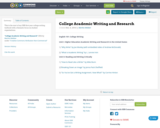
This is the start of my OER first year college writing textbook with a thematic focus on student organizations.
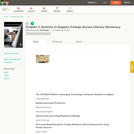
This resource guide begins by outlining the theory underlying the literacy work and then lays out the framework for the supports included in the Readers series. Subsequent chapters describe and illustrate the specific content literacy and language development strategies that have been chosen as being of particularly high impact. Although most of the strategies can be used in multiple ways, we have chosen to present them as occurring "Before, During and After Reading" because of the importance of this mental model in effective content literacy instruction.
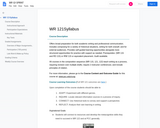
This syllabus relies on three openly licensed textbooks:
Gagich, Melanie and Emilie Zickel. A Guide to Rhetoric, Genre, and Success in First-Year Writing.
Priebe, Sybil, Dana Anderson, and Robin Marman. Writing Unleashed.
Wangler, Sarah and Tina Ulrich, editors. 88 Open Essays: A Reader for Students of Composition and Literature.
Course Description
Offers broad preparation for both academic writing and professional communication. Includes composing for a variety of rhetorical situations, writing for both oneself, and for external audiences. Provides self-guided learning opportunities alongside more structured opportunities for practice with support as needed.
Intended Outcomes for the course
Upon completion of the course students should be able to:
ADAPT: Experiment with different genres.
INQUIRE: Locate relevant information sources in a process of inquiry.
CONNECT: Use rhetorical tools to convey and support a perspective.
REFLECT: Analyze their own learning in writing.
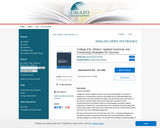
College ESL Writers: Applied Grammar and Composing Strategies for Success is designed as a comprehensive grammar and writing etext for high intermediate and advanced level non-native speakers of English. We open the text with a discussion on the sentence and then break it down into its elemental components, before reconstructing them into effective sentences with paragraphs and larger academic assignments. Following that, we provide instruction in paragraph and essay writing with several opportunities to both review the fundamentals as well as to demonstrate mastery and move on to more challenging assignments.
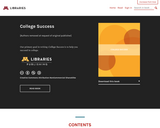
College Success takes a fresh look at what it means, in today’s world, with today’s students, to be successful in college.Although many of the topics included—from study skills to personal health, from test-taking to managing time and money—will look familiar to those who have used student success texts that have been around for many editions, College Success takes a new approach. The focus is on realistic, practical tools for the students who need them. This is a book designed, frankly, for students who may have difficulty with traditional college texts. The style is direct and to the point. Information is presented concisely and as simply as possible. This is not a weighty tome that discusses student success—this is a manual for doing it.College student demographics have changed considerably in recent decades. More than a third of all students enroll not directly from high school but after a delay of some years. More students are working and have families. More students come from varied ethnic and cultural backgrounds. More students are the first in their family to attend college. More students have grown up with electronic media and now read and think in ways different from the previous generation. With these and so many other cultural changes, more students are not well prepared for a college education with the study skills and life skills they need to become successful students.For each student to get the most out of College Success and their college experience they must understand who they are as it relates to college. To that end, in every chapter students explore themselves, because success starts with recognizing your own strengths and weaknesses. Students make their own goals based on this self-assessment, determining what success in college really means for them as individuals. Interactive activities then help students learn the choices available to them and the possibilities for improving their skills. Skills are presented in step-by-step processes, tips for success in manageable highlighted displays. Most important, students always see the value of what they are reading—and how they can begin to apply it immediately in their own lives.College Success is intended for use in Freshmen Orientation, Study Skills or Student Success courses. A 2009 study revealed that currently nationwide, 34% of college freshmen do not return to their college for their sophomore year. This book is designed to help change that.
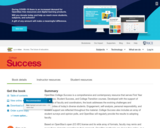
OpenStax College Success is a comprehensive and contemporary resource that serves First Year Experience, Student Success, and College Transition courses. Developed with the support of hundreds of faculty and coordinators, the book addresses the evolving challenges and opportunities of today’s diverse students. Engagement, self-analysis, personal responsibility, and student support are reflected throughout the material. College Success also includes an array of student surveys and opinion polls, and OpenStax will regularly provide the results to adopting faculty.
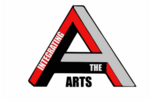
This resource was created by Ross Renfo, in collaboration with Dawn DeTurk, Hannah Blomstedt, and Julie Albrecht, as part of ESU2's Integrating the Arts project. This project is a four year initiative focused on integrating arts into the core curriculum through teacher education, practice, and coaching.
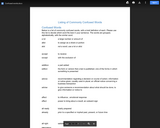
A listing of commonly confused words in the English language. Created by Professor Eileen Cusick for OIT-110, Communications and Editing, at Springfield Technical Community College.
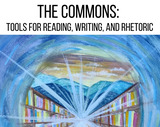
The Commons: Tools for Reading, Writing, and Rhetoric gives instructors and students of college writing courses a single source for information on metacognitive critical reading, rhetorical awareness, and MLA formatting basics as well as interesting and relevant reading and viewing content. Its approach is interdisciplinary, bringing in material from ecology, sociology, psychology, technology, popular culture, political science, cultural studies, and literature. Each essay, website, video, infographic, and poem has been carefully chosen to speak to the Eastern Kentucky University community, but everyone can find something that speaks to our common human experience and our need to communicate and connect with one another.
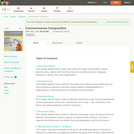
This textbook follows California Language Arts Standards for grades 9-12 to provide a generalized understanding of composition and to serve as a supplementary aid to high school English teachers.

What does it take to be successful in the workplace? This unit provides students with the opportunity to examine this question, evaluate what others say and form their own voice, and finally to express and share what they find. The materials are for the instructor and provide options to adapt to specfic students. learning needs, and time frame.
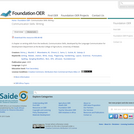
A chapter on writing skills from the textbook, Communication Skills, developed by the Language Communication for Development Department at the Bunda College of Agriculture, University of Malawi.
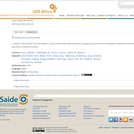
A chapter on writing skills from the textbook, Communication Skills, developed by the Language Communication for Development Department at the Bunda College of Agriculture, University of Malawi.
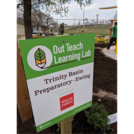
STUDENT ACTIVITY -- 4th -- TX. This is a distance learning activity students can do at home. Good readers can compare two stories by telling how the character's adventures or experiences are the same. Or, they can contrast a character's adventures or experiences to tell how they are different. Both of these activities help a reader show that they understand the text.This activity was created by Out Teach (out-teach.org), a nonprofit providing outdoor experiential learning to transform Science education for students in under-served communities.
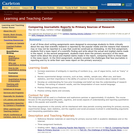
A set of three short writing assignments were designed to encourage students to think critically about the way that scientific research is reported by the popular media and the reasons that research may or may not be reported in a way that could be construed as misleading.
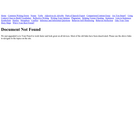
Watch a video that explains how to write a comparison/contrast essay. Print a document to accompany the video for more practice. Comparison/contrast essays help you learn really efficiently, because they present information in a way our brains like. When we see something new, we want to know how it's similar to something we already know about, and how it's different, too. Let's say that you need to buy a car. When you look at the different models, you'll compare what's similar and different between the models. When a cell phone manufacturer comes up with a new model, they tell you what great features the phone has that people have liked before (the similarities) and what fantastic new features it has that help it stand out (the differences).
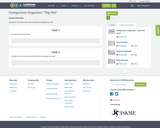
Contains Tool Overview and student examples by level
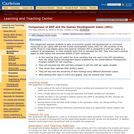
This assignment exposes students to data on economic growth and development as commonly measured by per capita GDP and the Human Development Index (HDI) for 100 countries of the world. There is a big debate about how good an indicator HDI is compared to GDP per capita as a measure of development.

Complex sentences are an important step in enabling students to
produce more sophisticated writing. Mastering complex sentences
allows students to have greater control when communicating.
This guide is intended to provide a starting point for you to approach
the teaching of writing in your classroom. It builds on the knowledge
learnt in the other sentence guides.